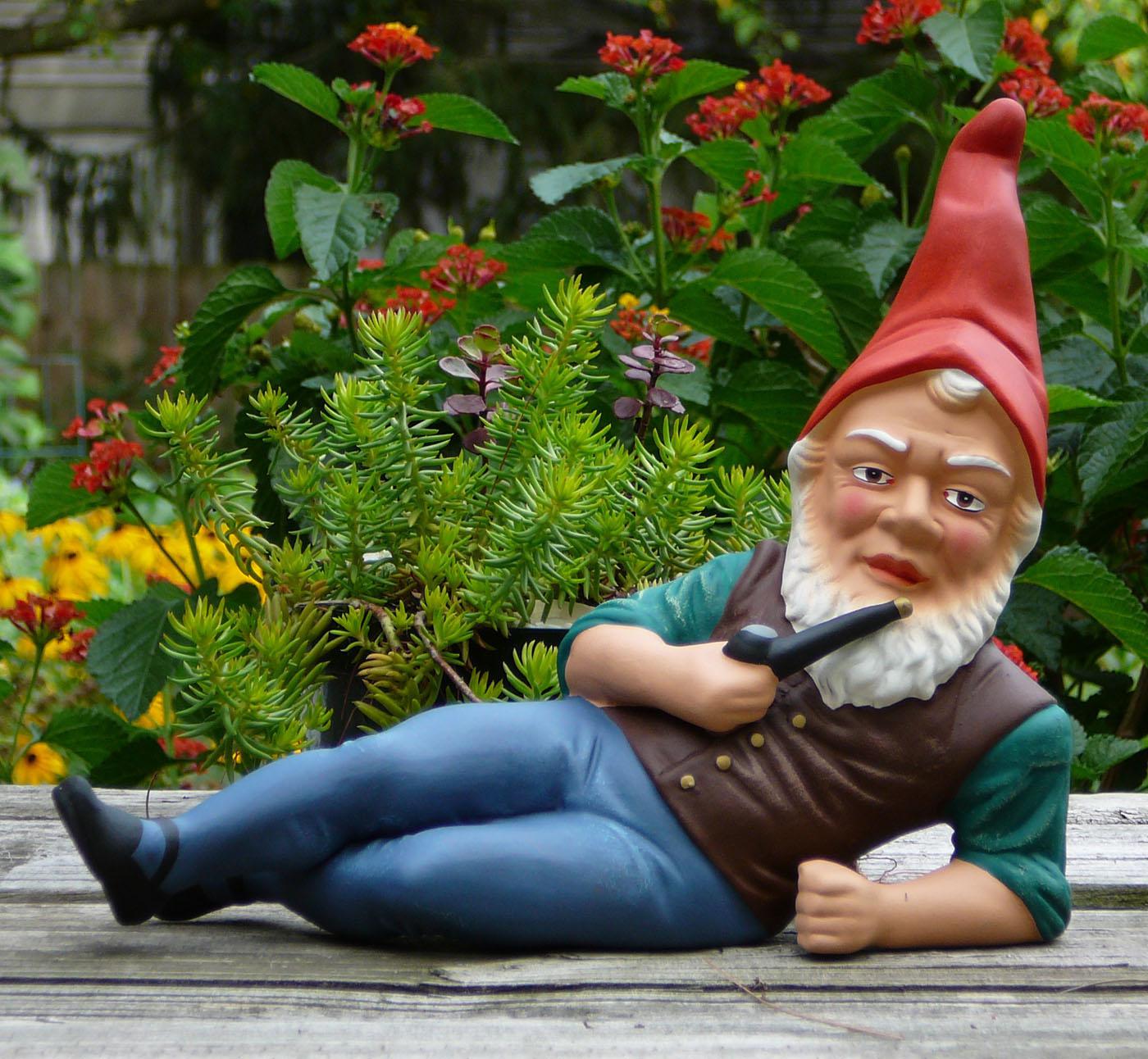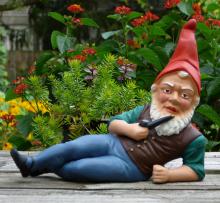Information Possibly Outdated
The information presented on this page was originally released on November 7, 2011. It may not be outdated, but please search our site for more current information. If you plan to quote or reference this information in a publication, please check with the Extension specialist or author before proceeding.
Garden gnomes can add fun, personality
We’ve all seen garden gnomes in other people’s yards -- the creatures of woodland legend that represent the spirit of the earth. Maybe it’s time you put one in your own garden.
Gnome is a derivation of the Greek word for “earth dweller.” Garden gnomes were first used in German gardens in the mid-1800s. Made out of terra cotta, they were painted and clothed like miners of the day, with outfits that included the cute little pointed hats.
From Germany, garden gnomes spread to France and England. In parts of Europe, a garden gnome was a status symbol. Today, often mass-produced and plastic, they are found all over the world.
Much garden lore centers on these legendary creatures. Garden gnomes are said to bring good luck and goodwill to the garden and gardener who invites them in. According to the story, they enhance the harvest and look after the other creatures that occupy the garden.
The gnome is even said to be the actual caretaker of the garden in which it lives. Some believe that at night, the gnomes help out with some of the smaller garden chores.
The animated movie Gnomeo and Juliet is based on this concept. The blue gnomes and red gnomes come to life when their owners are not looking.
Just hoping these stories are true is enough reason for some gardeners to have at least one gnome in their yard. Other gardeners simply enjoy garden gnomes for their ornamental value.
If you’re thinking about getting one, be assured that garden gnomes are completely self-sufficient. No additional care or feeding is required. All they need is a little shade and light rain on occasion. It doesn’t hurt to give them some gentle encouragement every once in a while.
Garden gnomes tend to appreciate language skills, so try referring to your gnome in a foreign language. In Norway, gnomes are called Nisse, one who protects the farm animals. In Albania, they are called dude, which I think sounds a lot like a greeting you might hear in California.
Yard art is a fun way to express your personality to the world. What better way to do this than by having a gnome or two in the garden?
So when the weather gets cold and there’s not much you can do outdoors, consider shopping for a garden gnome to get your yard ready for the coming spring.








